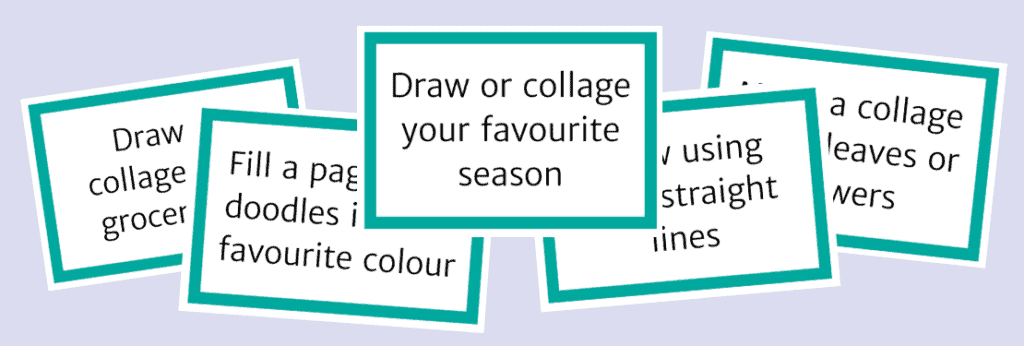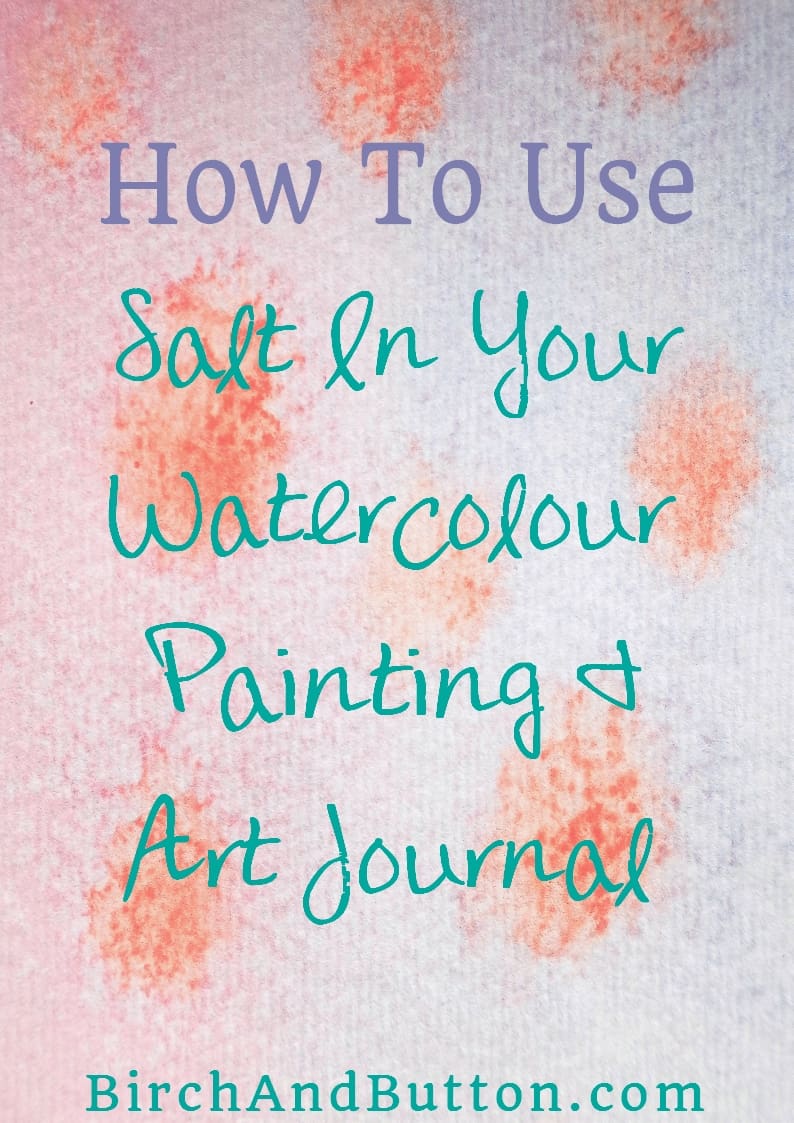When it comes to mixed media pieces and art journals, using salt with wet watercolour paint can create some really interesting textures. This blog post looks at how to use salt in your watercolour painting and what the outcome might be.
Using salt with watercolours is a great technique for creating interest and texture in art journal backgrounds. When you sprinkle salt onto wet watercolour paint, the grains of salt absorb some of the liquid on the paper.
Exactly how much paint is absorbed depends on the amount of salt you use, the kind of salt you use, and how wet the paint is. That’s what I’m looking at in this blog post.
Bear in mind that using salt will slow the drying time of your piece. Fine salt won’t take as long to dry as coarse salt, but it will still be longer than you’re used to with just plain watercolours.
You can either leave the salt in place on the page when it’s dry or brush it off. (Actually, this only works with fine salt, and even then some of that falls off. If you use coarse salt, you could stick it to the page if you feel like it when the paint is properly dry.)
In all of the examples below I’ve described how I created each swatch as best I can. Obviously, the exact outcome will vary depending on the supplies you use.
For reference, I used Winsor & Newton Cotman watercolour paint in burnt sienna (definitely in autumn mode over here!) with 300gsm weight watercolour paper.
So let’s take a look at how to use salt in your watercolour painting and art journaling.
Sign up for my monthly emails of creative tips, tutorials and DIYs and get 31 free creative prompts!

You can unsubscribe at any time
How to use salt in your watercolour painting and art journal
Fine table salt
This kind of fine salt gives a subtle effect. I sprinkled it on quite generously and got the kind of dappled effects you can see in the picture below.
I painted four swatches: watercolour on dry paper, a medium wash, a watery wash, and a medium wash of two colours (burnt sienna and yellow ochre) blended together.

Watercolour on dry paper – bottom left
As the paint and paper were quite a bit drier than with the other swatches, the grains of salt absorbed much less paint here. You can almost see where each individual grain sat on the page. I think if you sprinkled the salt very sparsely you could achieve a very fine polka dot effect on the page.
Medium wash – top left
This is a nice compromise between the other two extremes. There’s a fair bit of indistinct texture and also a number of more isolated dots where the salt sat. I think this would be a really nice effect over a larger area.
Watery wash – top right
The salt sucked up a lot of the watery paint here, as you might expect. It looks to me a little like the effect on tie-dyed fabric, which is an interesting effect but takes it a little further than I had intended. It seems like more paint was absorbed than was left on the page!
Mixed colours – bottom right
This gives a very similar effect to the medium wash.
Coarse sea salt
There’s a much less subtle effect with coarse salt. I placed just 3 or 4 grains of salt onto each watercolour square.
You can see where I placed each piece of salt in the picture below – that’s where the paint has been removed from the paper.
As with the fine salt, I painted four swatches: watercolour on dry paper, a medium wash, watery wash, and a medium wash of two colours (burnt sienna and yellow ochre) blended together.

Watercolour on dry paper – bottom left
The salt made very little difference in this swatch. Because the paint and paper were that much drier than in the other swatches, the salt absorbed much less paint.
Medium wash – top left
The coarse salt made a bit more difference in this swatch. However it didn’t soak up much more paint from the area around the grain of salt. Adding a few more grains of salt might work better here.
Watery wash – top right
The salt made the most difference in this situation. It absorbed paint from quite a large area around the actual salt grain. I think this is my probably favourite effect with the coarse salt.
Mixed colours – bottom right
Again, the effect here was very similar to the medium wash.
In conclusion…
Personally, I was less keen on the effect of the coarse salt and would probably avoid using it in future work. You could probably achieve a similar effect by just blotting the paint with a piece of kitchen paper.
On the other hand, I really liked the subtle dappled effect from sprinkling a generous amount of the fine salt onto the wet paint.
I’ll keep playing around with the amount of water I use with the paint and salt to alter the effects depending on what I’m trying to achieve in my art journaling. Something that’s just occurred to me is experimenting with layering colours and using salt on the top layer.
Which of the effects did you like best? Do you already use salt techniques with watercolour paints. Is it something you might try after reading this blog post? Let me know in the comments below!
About Stacey

I’m Stacey and I’m a blogger, abstract artist and freelance writer. My aim is to help busy people feel inspired and get more creative with tutorials, hints and tips.
I live in Cardiff with my partner and dog, and in my free time you’ll find me hiking, reading, painting or sampling a craft beer or two.

